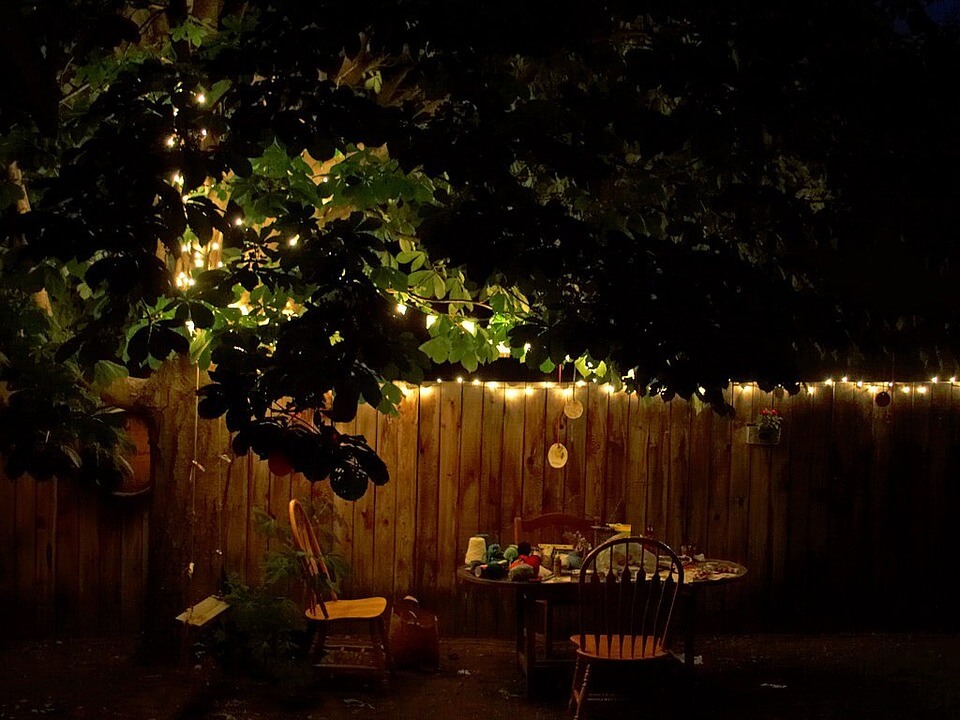Lighting Options for your Garden

There can be many different reasons why you may want to add light to your garden, it may be for decorative purposes, perhaps for security purposes or maybe for purely functional purposes. In this article we are going to take a look at the different options available for your garden lighting needs.

Solar powered garden lights
Possibly the cheapest and easiest way to install lighting in your garden is with solar lighting. Solar lights generally have a small solar panel integral to the light itself. This panel absorbs the light from the sun and converts it into electricity. During the day this electricity is stored in an integral battery inside the lamp meaning it is ready for use as soon as it gets dark.
Solar powered lights have very good green credentials as they are not drawing energy from the grid, but their main advantage over other forms of light is the ease of installation. Because they are self contained, there is no requirement for an electrician to connect them to the electrical system in your house saving a lot of time and money. They do have several disadvantages though.
The amount of light they emit is lower than a permanently wired light, and during the winter when they are exposed to less sunlight during the course of the day the amount of time they can run for will be a lot less.
This is why we recommend using solar powered lights primarily to provide ambient or mood lighting in a garden setting.

Plug in lighting
Plug in, or plug and play lights are as the name suggests work by being plugged into a socket. They are probably after solar lighting the second most simple to install of all the lighting types. They are available in a massive range of styles including floodlights, post lights and spotlights.
They are very simple to install, they normally come in three separate elements: the transformer which plugs directly in to the plug, an extension lead with various connection points on it and the lights themselves, normally with a short lead to attach them to the extension lead.
This simple modularity means it is easy for you to lay out the lights as you wish and, unlike solar, the brightness and time that they will run is not affected by the weather.
The one thing to think carefully about though is how and where you are going to run the cable, as leaving the cable trailing or dangling could potentially lead to an injury.

Mains powered garden lights
As the name suggests, this type of lighting is permanently connected to your electricity supply. Despite being more expensive than the previous two solutions, this is probably the best option if you are planning on leaving the lights installed permanently.
Having this type of light installed opens you up to the whole range of available lighting styles, along with the confidence that all the while the electricity in your house is working, so will your outside lights.
It will also give you more options for operating the lights, allowing you to mount light switches wherever you wish.
Although it is possible to install this sort of lighting in your own home, it is always best to get a registered electrician to do this work for you as they will ensure its installed correctly as well as dealing with any notification issues.
Styles of garden lights
Those are your three main types of lighting system available, but now we are going to look at the different styles available.

Garden wall lights
As the name suggest wall mounted lights are permanently fixed to a wall. Hundreds of different styles are available from traditional style coach lights to ultra modern LED style items. You can use them to provide useful light for finding your way around the garden alternatively they can be used to provide ambient/mood lighting.

Pathway lights
These lights are designed to be mounted in bricks, tiles or paving slabs giving an integrated smooth look. They can be perfect for lighting your way in the dark as well as highlighting garden features.

Ground & decking lights
Similar to paving/brick lights these are designed to be mounted in the decking itself. Again they can be perfect for lighting the areas you wish to use or providing ambient light.

Garden string lights
Generally used for decorative purposes rather than practical purposes, if you decide to use them ensure that they are specifically designed for use outside. The most commonly available types are of the plug in type and generally only designed to be put up temporarily.

Outdoor sensor lights
Security lights are one of the most common forms of outside lighting, a large number of homes have a PIR operated flood lamp. They can act as a useful visual deterrent as well as providing useful light when just popping outside to fill the bin up for example.
If you enjoyed reading this, why not take a look at our guide to IP Ratings?
Back to blog



